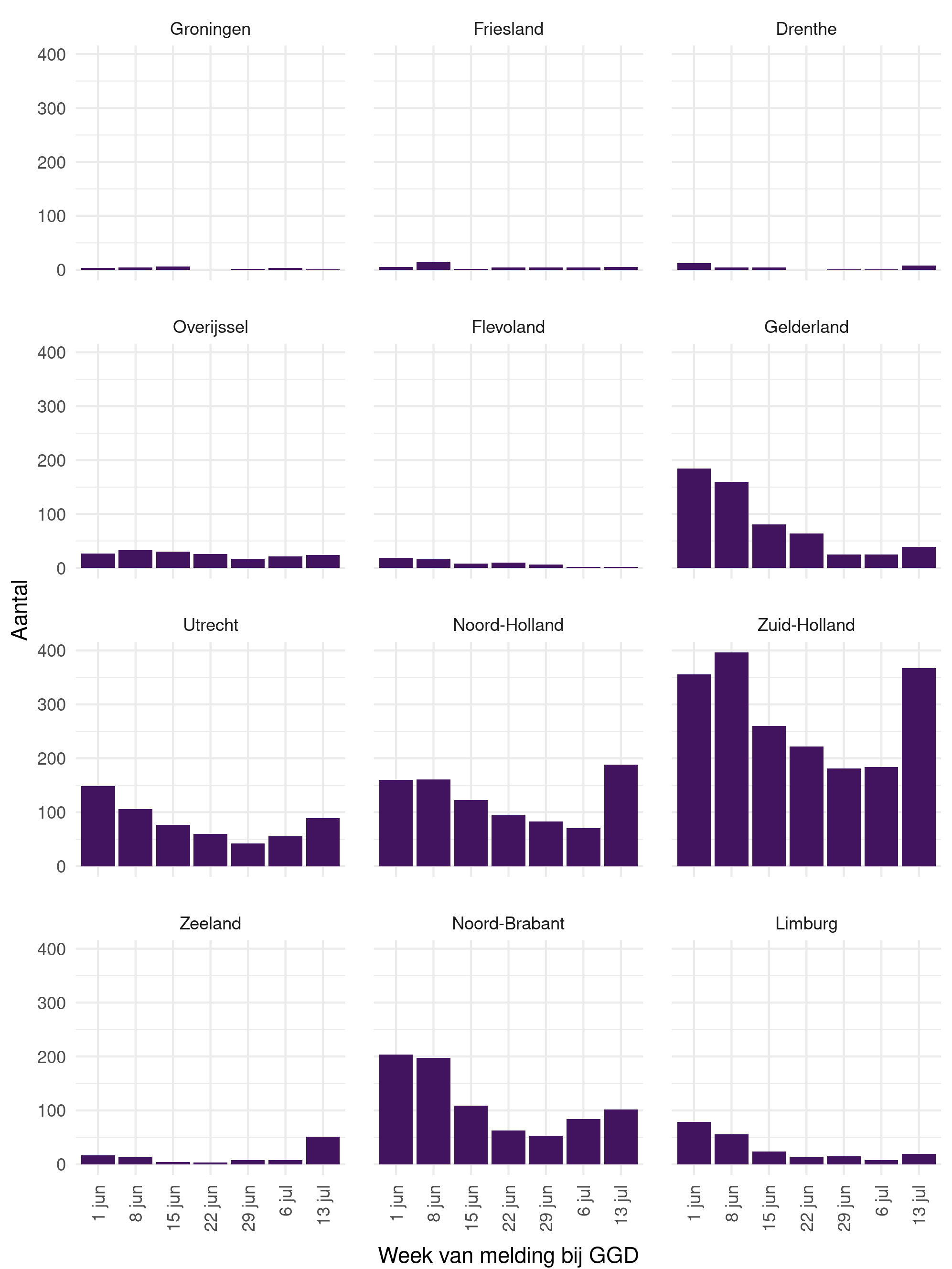
987 new COVID-19 infections were reported over the past week. This is nearly twice the number of infections reported in the previous week, when 534 new cases were reported.
The number of infections with the novel coronavirus is increasing again. To prevent the virus from continuing to spread, it is important for people to comply with the measures: social distancing (stay 1.5 m apart), wash hands, sneeze and cough into your elbow, and use paper tissues. Also: stay home, work from home, and get tested at the first sign of symptoms.
The reproduction number (R) is used in an epidemic to see how fast the virus is spreading. The reproduction number (Rt) is 1.29 this week. It is the first time since 15 March that the bandwidth of the Rt is completely above 1.0. This is also an indication that, following a period of few infections, the spread of the novel coronavirus is increasing again in the Netherlands. The reproduction number (R) indicates how many other people are infected on average by a person who has the novel coronavirus. The reproduction number is currently at 1.29, which means that 100 people will collectively infect another 129 people.
Percentage of positive tests is rising
Between 13 July and 19 July, 88,886 people* were tested at the GGD test sites. That is an increase of more than 12,000 tests compared to the week before, when 75,547* tests were administered. The percentage of people who tested positive rose from 0.6% in week 28 (6-12 July) to 1.0% in the week of 13-19 July.
There are regional differences in the number of confirmed cases per province (see figure). This is also visible in the number of tests performed per 100,000 inhabitants and the percentage of positive tests per region. (see epidemiological report) The provinces of South Holland, North Holland and Zeeland in particular show an increase in the number of confirmed cases
Number of local clusters in the Netherlands
Spread throughout the country, there is an increase in the number of small local outbreaks (clusters) with at least three related infections. There are currently 96 active COVID-19 clusters in the Netherlands. The average size of these clusters is 5.4 people (range: 3-23). These infections mainly occur at home, but in recent weeks there has been an increase in infections due to contact with other family members, friends, at parties, in the workplace or in cafés.
Figure: Number of reported COVID-19 infections to GGDs per week, per province, as of 1 June 2020
